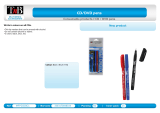
Table of contents2
Ta b l e o f c o n t e n t s
Important safety
instructions ................... 3
Introduction.................. 7
Projector features.....................................7
Shipping contents ......................................8
Projector exterior view.........................10
Controls and functions ..........................11
Positioning your
projector ..................... 16
Choosing a location................................16
Obtaining a preferred projected image
size..............................................................17
Connection ................. 21
Connecting a computer or monitor...23
Connecting Video source devices.......26
Operation ................... 30
Starting up the projector ......................30
Adjusting the projected image .............32
Using the menus......................................34
Securing the projector...........................35
Switching input signal .............................37
Magnifying and searching for details ...38
Optimizing the image .............................40
Creating your own startup screen......44
Setting the presentation timer .............45
Remote paging operations ....................46
Hiding the image......................................46
Utilizing FAQ function ...........................47
Locking control keys ..............................47
Operating in a high altitude
environment.............................................48
Adjusting the sound................................48
Personalizing the projector menu
display........................................................ 49
Controlling the projector through a LAN
environment.............................................50
Displaying image through Q Presenter ..
.................................................................... 60
Using the Web Control Lock.............. 64
Using the Projection Login Code ....... 64
Presenting From a USB Reader...........65
Remote Desktop Control through Q
Presenter .................................................. 68
PointDraw™ Pen 2.0............................. 70
Shutting down the projector ............... 75
Menu operation ...................................... 76
Maintenance ............... 90
Care of the projector............................ 90
Lamp information ................................... 91
Troubleshooting......... 97
Specifications.............. 98
Dimensions .............................................. 99
Ceiling mount installation ...................100
Timing chart...........................................101
Warranty and Copyright
information............... 104




















